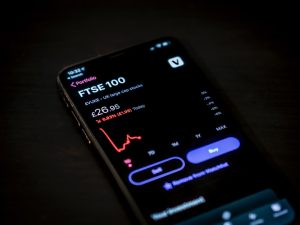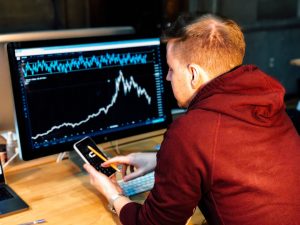Forex trading is a lucrative business that involves buying and selling currencies in the global market. One of the essential principles of forex trading is to use stop-loss orders, which limit potential losses by automatically closing a trade at a predetermined price level. However, some traders believe that stop-loss orders can hinder their profits by closing trades too early, especially during market volatility. In this article, we will explain how to forex trade without stop loss and the risks involved.
Before delving into how to forex trade without stop loss, it is essential to understand the concept of stop loss. A stop-loss order is an instruction given to a broker to sell a currency pair when it reaches a specific price level. The purpose of a stop-loss order is to limit the potential loss of a trade if the market moves against the trader’s position. For example, if a trader buys the EUR/USD at 1.2000 and sets a stop loss at 1.1950, the trade will automatically close when the price reaches 1.1950, limiting the trader’s loss to 50 pips.
While stop-loss orders can protect traders from large losses, some traders believe that they can hinder their profits by closing trades too early. For example, during market volatility, prices can fluctuate widely, triggering stop-loss orders and closing trades prematurely. As a result, some traders prefer to forex trade without stop loss to allow their trades to run for longer periods.
To forex trade without stop loss, traders must have a deep understanding of the market and use advanced technical analysis tools. Here are some techniques that traders use to forex trade without stop loss:
1. Use Support and Resistance Levels
Support and resistance levels are price levels where traders expect the market to reverse. Traders can use these levels to determine their entry and exit points, without setting a stop-loss order. For example, if a trader buys the EUR/USD at 1.2000 and expects the price to reach 1.2200, they can set a profit target at 1.2200 and wait for the market to reach that level.
2. Use Trailing Stop Orders
Trailing stop orders are similar to stop-loss orders, but they move with the market’s price. Instead of setting a fixed price level, traders can set a trailing stop order a certain number of pips away from the current market price. For example, if a trader buys the EUR/USD at 1.2000 and sets a trailing stop order at 50 pips, the stop loss will move up to 1.2050 if the price goes up by 50 pips. This allows the trader to lock in profits while allowing the trade to run without a fixed stop-loss order.
3. Use Hedging Strategies
Hedging is a technique that involves opening multiple positions in the same or different currency pairs to offset potential losses. For example, if a trader buys the EUR/USD and expects the price to go up, they can also sell the USD/CHF, which is inversely correlated to the EUR/USD. If the EUR/USD goes down, the USD/CHF will go up, offsetting some of the potential losses in the EUR/USD trade.
4. Use Fundamental Analysis
Fundamental analysis involves analyzing economic and political events that can affect currency prices. Traders who forex trade without stop loss can use fundamental analysis to identify long-term trends and make informed trading decisions. For example, if the trader believes that the US dollar will weaken in the long term due to inflation or political instability, they can buy the EUR/USD without setting a stop-loss order.
While forex trading without stop-loss orders can be profitable, it is also risky. Without a stop-loss order, traders are exposed to unlimited potential losses if the market moves against their position. Therefore, traders who choose to forex trade without stop loss must have a solid understanding of the market and use advanced technical and fundamental analysis tools to make informed trading decisions.
In conclusion, forex trading without stop loss can be a profitable strategy for experienced traders who understand the risks involved. Traders who choose to forex trade without stop loss must use advanced technical and fundamental analysis tools, such as support and resistance levels, trailing stop orders, hedging strategies, and fundamental analysis. However, traders must also be aware of the risks involved and use proper risk management techniques to limit potential losses.





